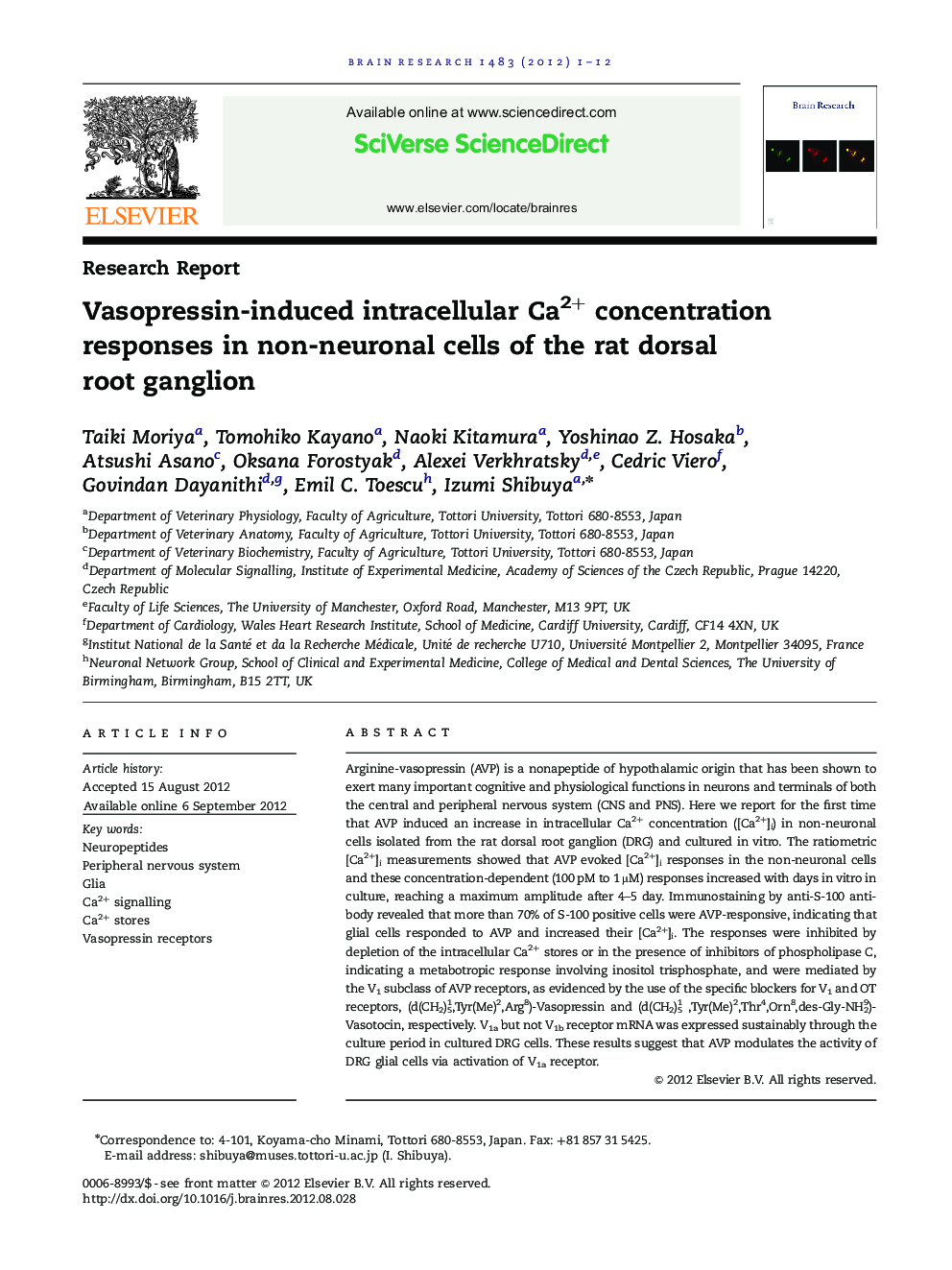| Article ID | Journal | Published Year | Pages | File Type |
|---|---|---|---|---|
| 6264091 | Brain Research | 2012 | 12 Pages |
Arginine-vasopressin (AVP) is a nonapeptide of hypothalamic origin that has been shown to exert many important cognitive and physiological functions in neurons and terminals of both the central and peripheral nervous system (CNS and PNS). Here we report for the first time that AVP induced an increase in intracellular Ca2+ concentration ([Ca2+]i) in non-neuronal cells isolated from the rat dorsal root ganglion (DRG) and cultured in vitro. The ratiometric [Ca2+]i measurements showed that AVP evoked [Ca2+]i responses in the non-neuronal cells and these concentration-dependent (100 pM to 1 μM) responses increased with days in vitro in culture, reaching a maximum amplitude after 4-5 day. Immunostaining by anti-S-100 antibody revealed that more than 70% of S-100 positive cells were AVP-responsive, indicating that glial cells responded to AVP and increased their [Ca2+]i. The responses were inhibited by depletion of the intracellular Ca2+ stores or in the presence of inhibitors of phospholipase C, indicating a metabotropic response involving inositol trisphosphate, and were mediated by the V1 subclass of AVP receptors, as evidenced by the use of the specific blockers for V1 and OT receptors, (d(CH2)51,Tyr(Me)2,Arg8)-Vasopressin and (d(CH2)51 ,Tyr(Me)2,Thr4,Orn8,des-Gly-NH29)-Vasotocin, respectively. V1a but not V1b receptor mRNA was expressed sustainably through the culture period in cultured DRG cells. These results suggest that AVP modulates the activity of DRG glial cells via activation of V1a receptor.
⺠AVP increases [Ca2+]i in glial cells from the rat DRG. ⺠The main source of [Ca2+]i in increase is intracellular Ca2+ store. ⺠V1a receptor mRNAs are expressed in rat DRG cultured cells.
